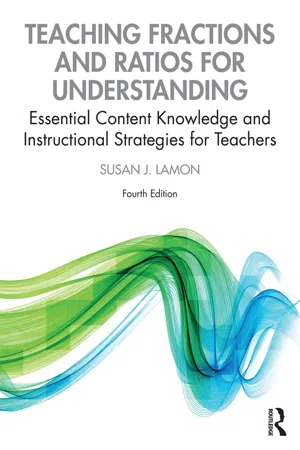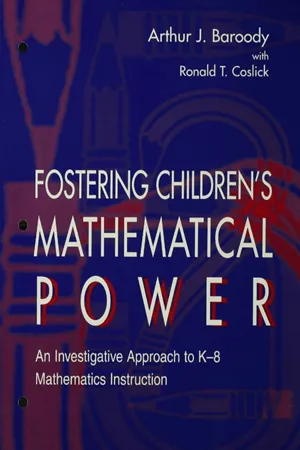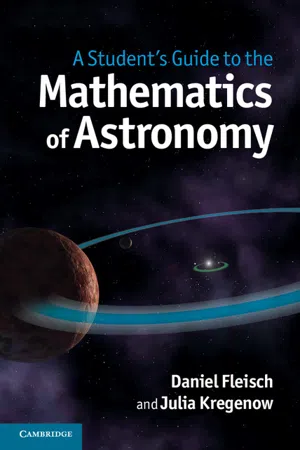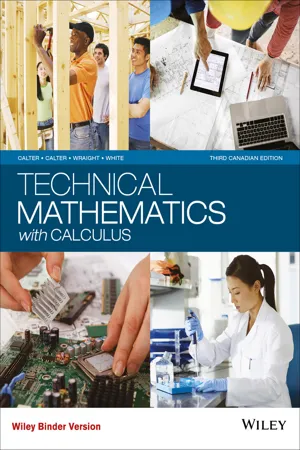Mathematics
Direct and Inverse proportions
Direct proportion refers to a relationship where two quantities change in the same direction, meaning as one increases, the other also increases. Inverse proportion, on the other hand, describes a relationship where one quantity increases as the other decreases, and vice versa. These concepts are fundamental in understanding the relationships between variables in mathematical equations and real-world scenarios.
Written by Perlego with AI-assistance
Related key terms
1 of 5
11 Key excerpts on "Direct and Inverse proportions"
- eBook - ePub
Big Ideas in Mathematics
Yearbook 2019, Association of Mathematics Educators
- Tin Lam Toh, Joseph B W Yeo(Authors)
- 2019(Publication Date)
- WSPC(Publisher)
In this chapter, I have unpacked the meanings of ratio, rate, proportion (including proportionality and proportion reasoning) and variation, and showed how they are connected to one another. First, ratio and rate are two slightly different ways of comparing quantities: which one to use depends on which one is more meaningful or helpful in the given context. Second, the term ‘proportion’ has a few meanings in real life. In particular, one of its meanings (namely, a proportion is a part-whole ratio) has caused many students to think that proportion and ratio mean the same thing. However, proportion can also refer to Direct and Inverse proportions. This meaning of proportion is also called proportionality.Third, the main idea of proportionality is the equality of two ratios ( for direct proportion and for inverse proportion), and its interpretation (i.e. if one quantity x is multiplied by n, the other quantity y is multiplied or divided by n) is called proportional reasoning.Fourth, a second perspective of proportionality is the equality of two rates ( for direct proportion and for inverse proportion), which is also the same as viewing the relations in terms of the equations and xy = k, k > 0, for Direct and Inverse proportions respectively. Fifth, the latter equations have been extended in the concept of variation to k ≠ 0. But during extension to include the case where k < 0, one part of the original idea of proportionality (namely, as one quantity x increases, the other quantity y increases or decreases proportionally) is no longer valid while the other part (namely, if one quantity x is multiplied by n, the other quantity y is multiplied or divided by n) is still applicable.Lastly, I have pointed out that both direct and inverse proportional reasoning via the Unitary Method (rather than the equality of two ratios or two rates, or formulating the relation in terms of an equation) is used frequently in the real world. In particular, if a situation involves a constant rate between two quantities such that both quantities are zero at the same time, the relation between the two quantities is a direct proportion, and so we can use direct proportional reasoning via the Unitary Method to find an unknown amount of one quantity given the amount of the other quantity. Therefore, there is a need for students to understand the connections among the concepts of ratio, rate, proportion and variation so that they can apply them correctly not only in school mathematics but in the real world.References
Ball, D. L., Thames, M. H., & Phelps, G. (2008). Content knowledge for teaching: What makes it special? Journal of Teacher Education, 59 - eBook - ePub
Teaching Fractions and Ratios for Understanding
Essential Content Knowledge and Instructional Strategies for Teachers
- Susan J. Lamon(Author)
- 2020(Publication Date)
- Routledge(Publisher)
constant of proportionality .In a direct proportion, the direction of change in the related quantities is the same; both increase or both decrease. As you analyze a situation, you might write this as ↑↑ or ↓↓. But a critical aspect of direct proportion is that both quantities increase by the same factor. That is, if one doubles, the other doubles. If one becomes five times as great, the other becomes five times as great. Then we say that “y is directly proportional to x ” or that “y varies as x .” Just because two related quantities both increase or both decrease does not mean that they are directly proportional. For example, as a person’s age increases, his height increases ↑↑, but age and height are not directly proportional because they do not increase by the same factor.Here is a problem involving quantities that are directly proportional:• If a box of detergent contains 80 cups of powder and your washing machine recommendscups per load, how many loads can you do with one box?11 4Think:cups for 1 load. The more loads I do, the more cups of detergent I need: ⇈11 4for 4 loads I will need 5 cups for 32 loads I will need 40 cups for 64 loads I will need 80 cupsWe can double both quantities (cups and loads), or quadruple both quantities, or take 8 times both quantities, but the two quantities always maintain the same relationship to each other. Notice that the number of cups (c) is alwaystimes the number of loads (d). Symbolically,11 4.c = 11 4d5istimes 4; 40 is11 4times 30; 80 is11 4times 64. Another way to think of this relationship is:11 4c d= 11 4 - eBook - PDF
Maths: A Student's Survival Guide
A Self-Help Workbook for Science and Engineering Students
- Jenny Olive(Author)
- 2003(Publication Date)
- Cambridge University Press(Publisher)
Many physical laws can be described by the two particular sorts of relation which we shall consider next. 3.A. (a) Direct proportion This describes a situation in which two quantities are related together so that as one gets bigger the other does also, in the same proportion. If the first quantity is doubled then the second quantity will be doubled also. We could take as an example the number of identical objects bought and the price paid. 84 Relations and functions The relationship between the number pairs making up the coordinates of the points on the straight line shown in Figure 3.A.1 also fits this description because it passes through the origin. Fill in the blanks for the points C , D and E yourself. You should have C is (6,3), D is (8,4) and E is (12,6). Each fraction y / x gives the gradient of the line because all of them give the relative change of y with respect to x measured from the origin. We have 1 2 = 2 4 = 3 6 = 4 8 = 6 12 = y x = the gradient, m . For any two general pairs ( x 1 , y 1 ) and ( x 2 , y 2 ), we have y 1 / x 1 = y 2 / x 2 = 1 2 . We know from Section 2.B.(f) that the equation of the line through these points is given by y = 1 2 x . The 1 2 is called the constant of proportionality and tells us the relation between this particular set of y s and x s. If two quantities x and y vary directly then we can write x y or x = ky where k is a constant. The symbol means ‘is proportional to’. 3.A. (b) Some physical examples of direct proportion Here are some examples of physical quantities which are related in this way. example (1) Charles’ Law of gases . This states that the volume, V , of a certain mass of gas is directly proportional to its temperature, T , measured from absolute zero, which is –273 °C. Therefore we can say V T or V 1 T 1 = V 2 T 2 etc. or V = kT . where k is the constant of proportionality. The numerical value of k will depend upon the units in which we measure V and T . 3.A Two special kinds of relationship 85 Figure 3.A.1 - eBook - ePub
Fostering Children's Mathematical Power
An Investigative Approach To K-8 Mathematics Instruction
- Arthur Baroody, Arthur J. Baroody, Jesse L.M. Wilkins, Ronald T. Coslick(Authors)
- 1998(Publication Date)
- Routledge(Publisher)
Problems 1 and 4 of Investigation 12.3 (page 12-11) do not involve a multiplicative relationship and, hence, are not proportion problems. In Problem 1, for example, the relationship between the number of exams corrected by Elke and that corrected by Faye can be determined by subtraction and expressed algebraically as E - 8 = F (e.g., if Elke has completed 20 exams, then Faye has completed 20 - 8 or 12 exams). Like Kenya in Part II of Investigation 12.3, though, many students incorrectly attempt to solve Problem 1 by setting up a proportion and using the standard cross-products algorithm (Cramer, Post, & Currier, 1993). The traditional skills approach promotes this kind of error by fostering the rote memorization and blind application of the cross- products algorithm.Types of Proportion Problems There are basically two types of proportions (Behr et al., 1992)—those involving direct proportions and those involving inverse proportions.Direct Proportions. Examples of direct proportions include the relationship between the height of an object and the length of its shadow (Investigation 12.1 on page 12-3), metric conversions (Problem 2 on page 12-11 of Investigation 12.3), and exchange rates (Problem 3 of Investigation 12.3). In the sample shadow data shown below, note that shadow length (y) was always 1.25 times (a constant factor k) longer than rod height (x). The relationship between two directly proportional quantities can be summarized by the algebraic equations A and B in Figure 12.3 below. For example, the data in Table B below can be capsulized by the formula y = 1.25•x.Table B: Sample Shadow Data (in cm)Figure 12.3: Direct Versus Inverse ProportionsIn some directly proportional situations, y is always a constant factor smaller than x. Consider, for instance, accounting or a “zero-sum” game, where someone’s gain is another’s loss. In Table C (on the next page), note that the more points a player scores, the more points the opponent loses and that the opponent’s score (y) can be determined by multiplying the player’s score (x) by the negative constant factor (-k) of -1. Such situations can be summarized in general terms by the algebraic equation y = -k•x. For instance, the sample scores for a zero sum game below can be capsulized by the formula y = -1•x - Daniel Fleisch, Julia Kregenow(Authors)
- 2013(Publication Date)
- Cambridge University Press(Publisher)
So although proportionality relationships involving quantities raised to a power require some extra vigilance, forming ratios of such relationships has the same benefits (canceling of constants) discussed above. To see how that works, form the ratio of the proportionality relationships for the areas of two circles: A 2 ∝ R 2 2 A 1 ∝ R 2 1 . Now turn the proportionality relationships into equations by explicitly writing the constant of proportionality, which we’ll call “ w ” (remember, when you form ratios of proportionality relationships, you can call the constants whatever you like): A 2 A 1 = w R 2 2 w R 2 1 = w R 2 2 w R 2 1 = R 2 R 1 2 . So the ratio of proportionality relations gives exactly the same result as that obtained by using the ratio of equations. Example: Compare the volumes of two spheres, where one has five times the radius of the other. From Eqs. 1.6 , you know that V ∝ R 3 . Writing this relationship as an equa-tion with the proportionality constant “ s ,” and comparing two different spheres (say, sphere 1 and 2) by dividing equations gives V 2 V 1 = sR 3 2 sR 3 1 = sR 3 2 sR 3 1 = R 2 R 1 3 . Since you know that one of the spheres (say, sphere 2) has a radius five times the other, you can use the mathematical substitution R 2 = 5 R 1 . Plugging 5 R 1 in for R 2 in the expression above and simplifying gives V 2 V 1 = 5 R 1 R 1 3 = 5 1 3 = 5 3 = 125 . That is, a sphere with five times larger radius has 125 times larger volume. 1.2 Absolute and ratio methods 21 Exercise 1.11. Hubble’s Law states that a galaxy’s velocity ( v ) and its dis-tance from us ( d ) are directly proportional: v ∝ d . If galaxy Z is 50 Mpc (megaparsecs) away from us and galaxy Y is 800 Mpc away, how do their velocities compare? 1.2.6 Inverse proportionality relationships An inverse proportionality means the relationship is reversed: as one quan-tity gets larger, the other gets smaller. For example, the wavelength ( λ ) and frequency ( f ) of light are inversely proportional.- eBook - ePub
A Focus on Ratios and Proportions
Bringing Mathematics Education Research to the Classroom
- Marjorie M. Petit, Robert E. Laird, Matthew F. Wyneken, Frances R. Huntoon, Mary D. Abele-Austin, Jean D. Sequeira(Authors)
- 2020(Publication Date)
- Routledge(Publisher)
1 Understanding Ratios, Rates and ProportionsBig Ideas- A ratio is a multiplicative comparison between two or more quantities.
- There are two types of ratios: joining/composing and comparing.
- Every ratio has an associated rate.
- Ratio situations are communicated in different ways. This can be confusing for students and can impact their conceptualization of ratio and proportion situations and their solutions to problems.
- A proportion is a statement that two ratios are equivalent.
- To work effectively with a proportion, one must attend to two quantities.
Introduction to Understanding Ratios, Rates and Proportions
This chapter examines foundational mathematics concepts related to ratios and proportions. The study of ratios and proportions has long been acknowledged as “one of the most important goals in the school mathematics curriculum” (Dole, Hilton, Hilton, & Goos, 2015, p. 534). Lesh et al. (1988) identified proportionality as the “capstone of elementary mathematics and the cornerstone to all that follows” (pp. 93–94). Because ratios and proportions are inherently based on multiplicative relationships, student success with ratios and proportions is dependent on strong understanding and fluency with rational number multiplication and division developed in the elementary grades. At the same time, success in later related topics such as linear functions is dependent upon understanding the multiplicative relationships in ratio and proportional situations (Lamon, 2007). Figure 1.1 highlights how multiplicative concepts transition across the mathematics curriculum.CCSSM and Ratios, Rates and Proportions
Instruction targeted on ratios and proportions in the CCSSM/NGA (2010) is first introduced in grade 6, focusing on understanding of ratios and rates and applying these concepts to familiar contexts like buying and selling and constant speed. That understanding is extended in grades 7 and 8 to a range of contexts and applications such as density, scale, slope, y = kx - eBook - PDF
- Michael A. Calter, Paul A. Calter, Paul Wraight, Sarah White(Authors)
- 2016(Publication Date)
- Wiley(Publisher)
x x ( 7) : ( 7) 2 : 9 - + = Insert the missing quantity. 9. x 3 ? 9 = 10. x x ? 4 7 16 = 11. a b b 5 7 ? 7 = - 12. a b c d b a ? - - = - 13. x x 2 5 ? 5 + = Find the mean proportional between the following. 14. 2 and 50 15. 3 and 48 16. 6 and 150 17. 5 and 45 18. 4 and 36 19. Find two numbers that are to each other as 5:7 and whose sum is 72. 421 Section 19–2 ◆ Direct Variation 20. Separate $150 into two parts so that the smaller may be to the greater as 7 is to 8. 21. Into what two parts may the number 56 be separated so that one may be to the other as 3 is to 4? 22. The difference between two numbers is 12, and the larger is to the smaller as 11 is to 7. What are the numbers? 23. An estate of $75,000 was divided between two heirs so that the elder’s share was to the younger’s as 8 is to 7. What was the share of each? 24. Two partners jointly bought some stock. The first put in $400 more than the second, and the stock of the first was to that of the second as 5 is to 4. How much money did each invest? 25. The sum of two numbers is 20, and their sum is to their difference as 10 is to 1. What are the numbers? 26. The sum of two numbers is a, and their sum is to their difference as m is to n. What are the numbers? 19–2 Direct Variation Constant of Proportionality If two variables are related by an equation of the following form: Direct Variation y kx y x or = ∝ 60 where k is a constant, we say that y varies directly as x, or that y is directly proportional to x. The constant k is called the constant of proportionality. Direct variation may also be written using the special symbol ∝ : ∝ y x It is read “y varies directly as x” or “y is directly proportional to x.” Taking a closer look at Eq. 60, you will notice that it is the equation of a straight line (covered in Chapter 5) y mx b = + with a slope of k and a y intercept of zero. Solving Variation Problems You can solve variation problems using two different methods: 1. - eBook - PDF
Mathematical Literacy NQF3 SB
TVET FIRST
- K van Niekerk O Roberts(Author)
- 2017(Publication Date)
- Macmillan(Publisher)
ii) What are the costs if the company makes 800 calendars? b) i) Write a formula for revenue r where n is the number of calendars that are sold per month. (i) If the company sells 1 400 calendars, what will its revenue be? c) Plot the graphs of the relationships in a) and b) on the same set of axes. d) How many sales does the company need to make to break even? Read this value from the graph. Remember The definition of direct proportion is: As one value gets bigger, the other also gets bigger in the same proportion, and if one value gets smaller, so does the other value, in the same proportion. 299 Module 15 Move between different representations of relationships in workplace contexts l A linear relationship does not necessarily indicate a directly proportional relationship. If a straight line does not go through the origin, then there is no direct proportion. These two graphs show linear relationships, but they are not directly proportional relationships. 6 5 4 3 2 1 0 1 2 3 4 5 6 6 5 4 3 2 1 0 1 2 3 4 5 6 If a straight-line graph starts at zero, it shows a direct proportion. 6 5 4 3 2 1 0 1 2 3 4 5 6 Plotting a graph of an inversely proportional relationship If two quantities are in inverse proportion, one quantity increases while the other decreases in the same proportion. For example, the faster you run, the less time it takes you to complete a race. If you run twice as fast, you take half the time. Speed and time are inversely proportional. Example 15.6 This shows a relationship between speed and time. Speed (m/s) 10 20 30 40 50 60 Time (s) 6 3 2 1,5 1,2 1 1. Comment on the relationship between the variables. 2. Draw a graph by plotting the points and connecting the points with a smooth curve. Use 1 cm = 10 m/s for speed and 1 cm = 1 s for time. Solution 1. As speed increases, the time taken decreases. 2. Plot the points and connect them with a solid, curved line: Time taken at different speeds 7 6 5 4 3 2 1 0 0 10 20 30 40 50 60 70 - eBook - PDF
- John Peterson, Robert Smith(Authors)
- 2019(Publication Date)
- Cengage Learning EMEA(Publisher)
Example 1 If a machine produces 120 parts in 2 hours, how many parts are produced in 3 hours? Analyze the problem. An increase in time (from 2 hours to 3 hours) will produce an increase in the number of pieces produced. Production increases as time increases. The proportion is direct. Set up the direct proportion . Let x represent the number of parts that are produced in 3 hours. The numerator of the first ratio must correspond to the numerator of the second ratio; 2 hours corresponds to 120 parts. The denominator of the first ratio must correspond to the denominator of the second ratio; 3 hours corresponds to x . UNIT 21 Direct and Inverse proportions OBJECTIVES After studying this unit you should be able to ● ● Analyze problems to determine whether quantities are directly or inversely proportional. ● ● Set up and solve Direct and Inverse proportions. Many shop problems are solved by the use of proportions. A machinist may be required to express word statements or other given data as proportions. Generally, three of the four terms of a proportion must be known in order to solve the proportion. When setting up a proportion, it is important that the terms be placed in their proper positions. 136 SECTION 2 RATIO, PROPOR TION, AND PERCENTAGE Solve for x . Check. 2 hours 3 hours 5 120 parts x 2 hours 3 hours 5 120 parts x 2 x 5 3(120 parts) 2 hours 3 hours 5 120 parts 180 parts 2 x 5 360 parts x 5 180 parts Ans 2 3 5 2 3 Ck Example 2 A tapered shaft is one that varies uniformly in diameter along its length. The shaft shown in Figure 21-1 is 15.000 inches long with a 1.200-inch diameter on the large end. A 9.000-inch piece is cut from the shaft. Determine the diameter at the large end of the 9.000-inch piece. 1.200 DIA x DIA 9.000 15.000 FIGURE 21-1 Analyze the problem . As the length decreases from 15.000 inches to 9.000 inches, the diameter also decreases at the same rate. The proportion is direct. Set up the direct proportion . - eBook - PDF
- Paul A. Calter, Michael A. Calter(Authors)
- 2011(Publication Date)
- Wiley(Publisher)
Solution: When quantities vary directly with each other, we can set up a proportion and solve it. Let us represent the initial values of x and y by and and the second set of values by and Substituting each set of values into Eq. 49 gives us and Note that k has the same value in both equations. We divide the second equation by the first, and k cancels. The proportion says: “The new y is to the old y as the new x is to the old x.” We now substitute the old x and y (3 and 27), as well as the new x (6). Solving yields as before. ◆◆◆ y 2 27 a 6 3 b 54 y 2 27 6 3 y 2 y 1 x 2 x 1 y 2 kx 2 y 1 kx 1 y 2 . x 2 y 1 , x 1 y 9(6) 54 x 6, y 9x k 9. 27 k(3) y kx y x y kx Direct Variation , y is directly proportional to x y varies directly as x Of course, the same proportion can also be written in the form Two other forms are also possible: and x 1 x 2 y 1 y 2 x 1 y 1 x 2 y 2 y 1 > x 1 y 2 > x 2 . Section 3 ◆ Direct Variation 503 ◆◆◆ Example 21: If y varies directly as x, fill in the missing numbers in the table of values. x 1 2 5 y 16 20 28 Solution: We find the constant of proportionality from the given pair of values (5, 20). Starting with Eq. 49, we have and substituting gives so With this equation we find the missing values. When When When When So the completed table is x 1 2 4 5 7 y 4 8 16 20 28 ◆◆◆ Applications Many practical problems can be solved using direct variation. Once you know that two quantities are directly proportional, you may assume an equation of the form of Eq. 49. Substitute the two given values to obtain the constant of proportionality, which you then put back into Eq. 49 to obtain the complete equation. From it you may find any other corresponding values. Alternatively, you may decide not to find k, but to form a proportion in which three values will be known, enabling you to find the fourth. ◆◆◆ Example 22: The force F needed to stretch a spring (Fig. 17–15) is directly pro- portional to the distance x stretched. - eBook - PDF
- Robert Reys, Mary Lindquist, Diana V. Lambdin, Nancy L. Smith(Authors)
- 2014(Publication Date)
- Wiley(Publisher)
Young children with a good understanding of numbers often use expressions such as “twice as much” or “half as much.” When children use these expressions, you should take advantage of the oppor- tunity to help them make connections and develop reversible thinking. Figure 13-3 Combining ratios is different from adding fractions. Chain A Chain B Chain C ratio of blue to orange is 2 to 3 or 2 /3 ratio of blue to orange is 4 to 5 or 4 /5 ratio of blue to orange is 2 to 3 or 6 /8 Figure 13-4 Which plant grew the most? 25 Height of plants in cm 20 15 10 5 0 Height now Height now Height 1 month ago Height 1 month ago Plant A Plant B PROPORTIONS A proportion is a statement that two or more ratios are equal or “the same”—for example, that the ratio 2:3 is the same as the ratio 4:6. Alternatively, you could say that two ratios are proportional (e.g., 2:3 and 4:6) or not propor- tional (e.g., 2:3 and 4:8). Understanding the relationships in proportions and working with these relationships is termed proportional reasoning and has been called the “capstone” of elementary school mathematics (Cramer, Post, & Currier, 1993). It is called the capstone because proportional rea- soning requires a high level of thinking, and it provides a direct link to many algebraic topics, including direct and inverse relationships. To get a sense of what proportional reasoning means, consider the following problem, which is illustrated in Figure 13-4. 268 Chapter 13 • Ratio, Proportion, and Percent: Meanings and Applications Bullseye Number of t-shirts 1 3 Cost $51 Dressmart Number of t-shirts 1 4 Cost $64 Alternatively, you could suggest that double number lines (also called two-sided number lines) would be a power- ful model: 1 3 1 4 Bullseye Dressmart Cost $51 Cost $64 With either of these models, your goal would be to help students find equivalent ways of representing the cost of a t-shirt at the two stores.
Index pages curate the most relevant extracts from our library of academic textbooks. They’ve been created using an in-house natural language model (NLM), each adding context and meaning to key research topics.










